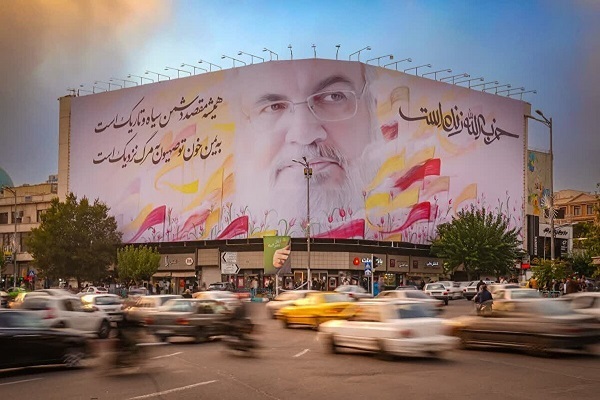Hezbollah is alive
TEHRAN (Defapress) – Sayyed Hassan Nasrallah, the martyred leader of the Resistance, suffered from several rises and fallings. On August 31, 1960, He was born as the eldest of three brothers and five sisters and was raised in the Karantina neighborhood which was the poorest and most deprived area in the Eastern Suburb of the Lebanese capital, Beirut.

He journeyed to Najaf carrying a letter of introduction from al-Gharawi addressed to Ayatollah Sayyed Mohammad Baqer al-Sadr, who expressed considerable interest in him. Al-Sadr, who would eventually suffer torture and martyrdom at the hands of the Saddam regime, assigned Sayyed Abbas al-Mousawi, who later rose to the position of Secretary-General of Hezbollah, the responsibility of overseeing and guiding the new student in both academic and personal matters.
Sayyed Hassan Nasrallah came back to Lebanon in 1978 due to the pressure of the Baath regime. On February 16, 1992, Israeli occupation forces assassinated Sayyed Abbas, his wife, and their five-year-old son. Following this event, Hezbollah's Shura Council convened and appointed Sayyed Nasrallah as the Secretary-General of the organization, despite his comparatively young age about other members of the council.
During Sayyed Nasrallah's tenure as Secretary-General, the Islamic Resistance in Lebanon engaged in numerous heroic confrontations with the Israeli occupation, most notably during the July 1993 Seven-Day War, the April 1996 aggression, and culminating in the historic victory of May 25, 2000, when most of Lebanon’s territories were liberated from Israeli occupation.
The Israeli military experienced a significant and historic defeat during the 2006 war. Subsequently, in 2012, Hezbollah engaged in combat against the takfiri terrorist threat that sought to destabilize Syria and advance into Lebanon. By 2017, Hezbollah successfully liberated the shared border region between the two nations, an event referred to as the Second Liberation.
On October 8, 2023, following the commencement of Israel's ongoing military campaign in the Gaza Strip, Hezbollah, led by Sayyed Hassan Nasrallah, initiated operations targeting Israeli positions in the occupied territories as a show of solidarity with Gaza and its resistance efforts. The Lebanese organization stated that it would cease its attacks only when the Israeli aggression against the besieged region concluded. As a result of these assaults, settlements in northern occupied Palestine near the Lebanese border were evacuated, leading to the displacement of nearly 100,000 Israeli settlers who were too fearful to return amidst the ongoing fire from Hezbollah.
One of the main achievements of the martyr Nasrallah was his wisdom in arranging the commanding structure. He saw the future and predicted what the Hezbollah movement must do in the condition that the enemy martyred the head commanders. As a result of this foresight, after the fool, Zionist enemy brutally assassinated the Secretary General of Hezbollah on Sep 27, 2024, the whole structure of the political and army wings of Hezbollah didn't get hurt and continued its' mission as usual and properly.
The path of Hezbollah didn't end after the assassination of the martyr Nasrallah, instead, this brave martyr leader of the Resistance, left a precious and powerful legacy which is the biggest nightmare of the Zionist regime. Hezbollah is alive as long as the belief of Resistance is alive.
